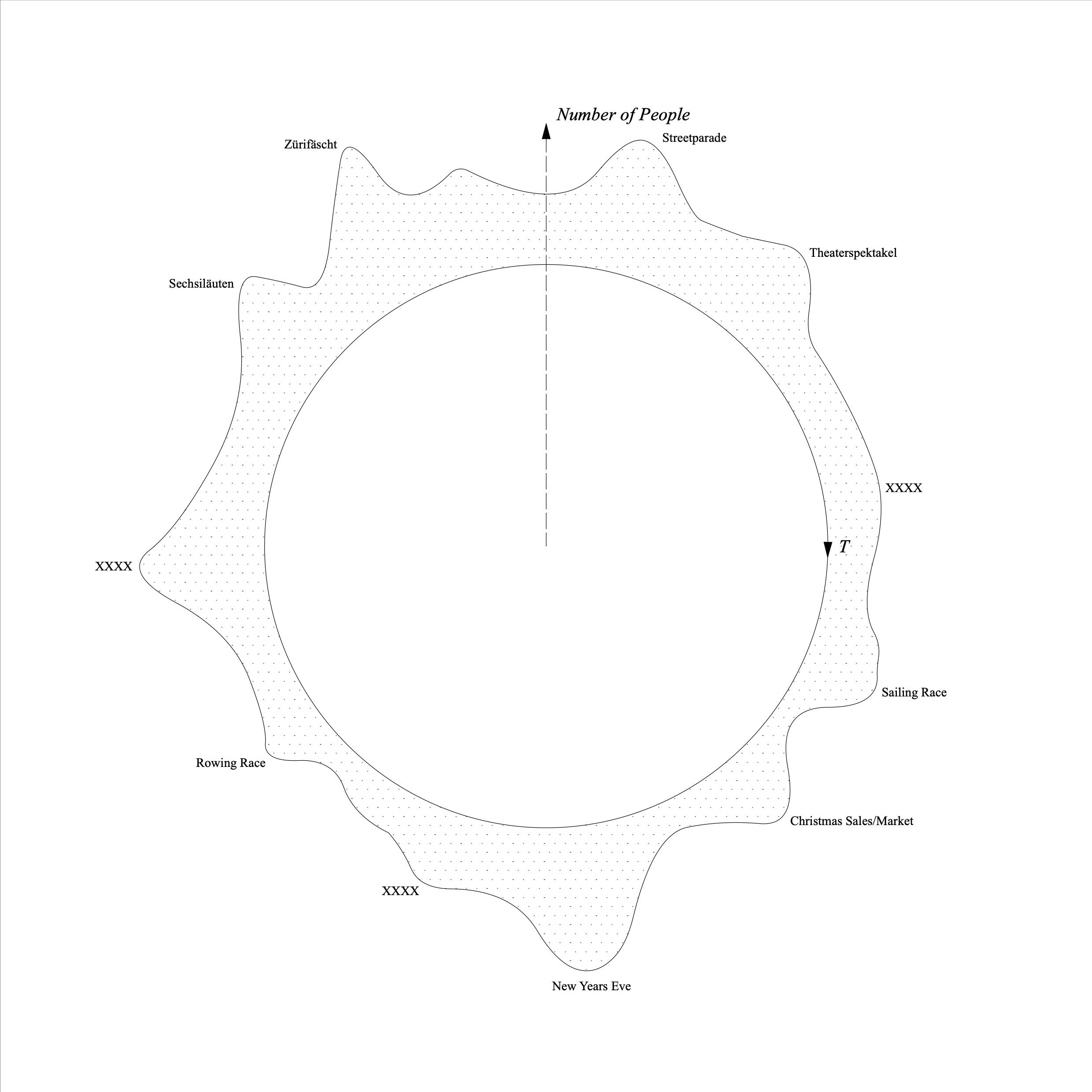Terraforming – Constructing Land Commons
Landfilling Lake Zürich
Landfilling Lake Zürich
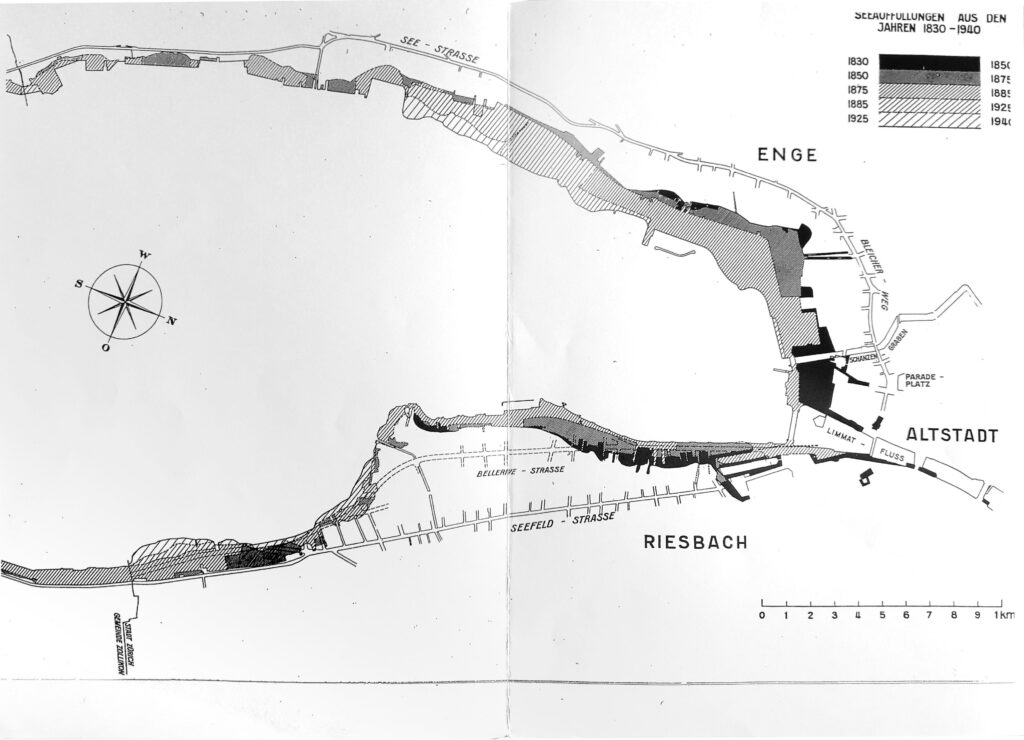
Since the 1830s, Zürich has engaged in numerous landfilling projects along the shoreline of its eponymous lake. These practices were initiated following the de-fortification measures that dismantled the city’s obsolete medieval defense systems. With the removal of these structures, the city had access to vast amounts of material, prompting the implementation of landfilling projects. As the city grew, another source of material in the form of excavation debris from infrastructure projects and building activity was added, leading to the expansion of these projects.
The landfilling process involved disposing of debris from as far away as the Gotthard Tunnel works into the lake, leading to the creation of new land and a notable reduction in the lake’s size around the Seebecken. As a result of these practices, there were significant changes in the ownership distribution and accessibility of the lake’s shoreline, which persisted for years to come.
Furthermore, these practices also created the possibility of commoning practices that continue to this day along the shoreline of the lake. The land and the urban spaces can be theorized as a (land) common, where different commoners have varying temporary and constant interests throughout the year to utilize the lake as a resource for their activities. These spatial practices necessitate various forms of organizational mechanisms, such as associations and specific usership contracts.
It is worth noting that these commoning practices can be complex and may require ongoing negotiation and cooperation between various stakeholders. Nevertheless, the possibilities that the landfilling projects have created have allowed for the development of diverse activities and uses along the shoreline, providing opportunities for people to come together and utilize the resource in a collaborative and sustainable manner.
Overall, the landfilling projects that began in the 1830s have had significant and lasting impacts on Zürich’s urban landscape and the possibilities for commoning practices. As the city continues to grow and evolve, it will be essential to consider the impact of these practices and to work towards inclusive and sustainable forms of resource utilization.
Corboz, André. “The Land As Palimpsest.” [1983]. Atlas of Places, 2021. URL: https://www.atlasofplaces.com/essays/the-land-as-palimpsest/.
Avermaete, Tom. “Constructing the Commons: Towards Another Architectural Theory of the City.” ARCH+, no. 232 (July 2018): 32–43.
Göldi Hofbauer, Margrith, and Nica Pola. “Ein Leitbild für das Seebecken der Stadt Zürich.” Anthos: Zeitschrift für Landschaftsarchitektur, vol. 48, no. 2 (2009): 54–58.
‘Bagger Hund’ during landfill works near Utoquai, Riesbach. Heavy machinery was needed to landfill the shore line during the Quaiprojekt of 1881–1887.
Image, Breitinger, Stadtarchiv Zürich, 1886.
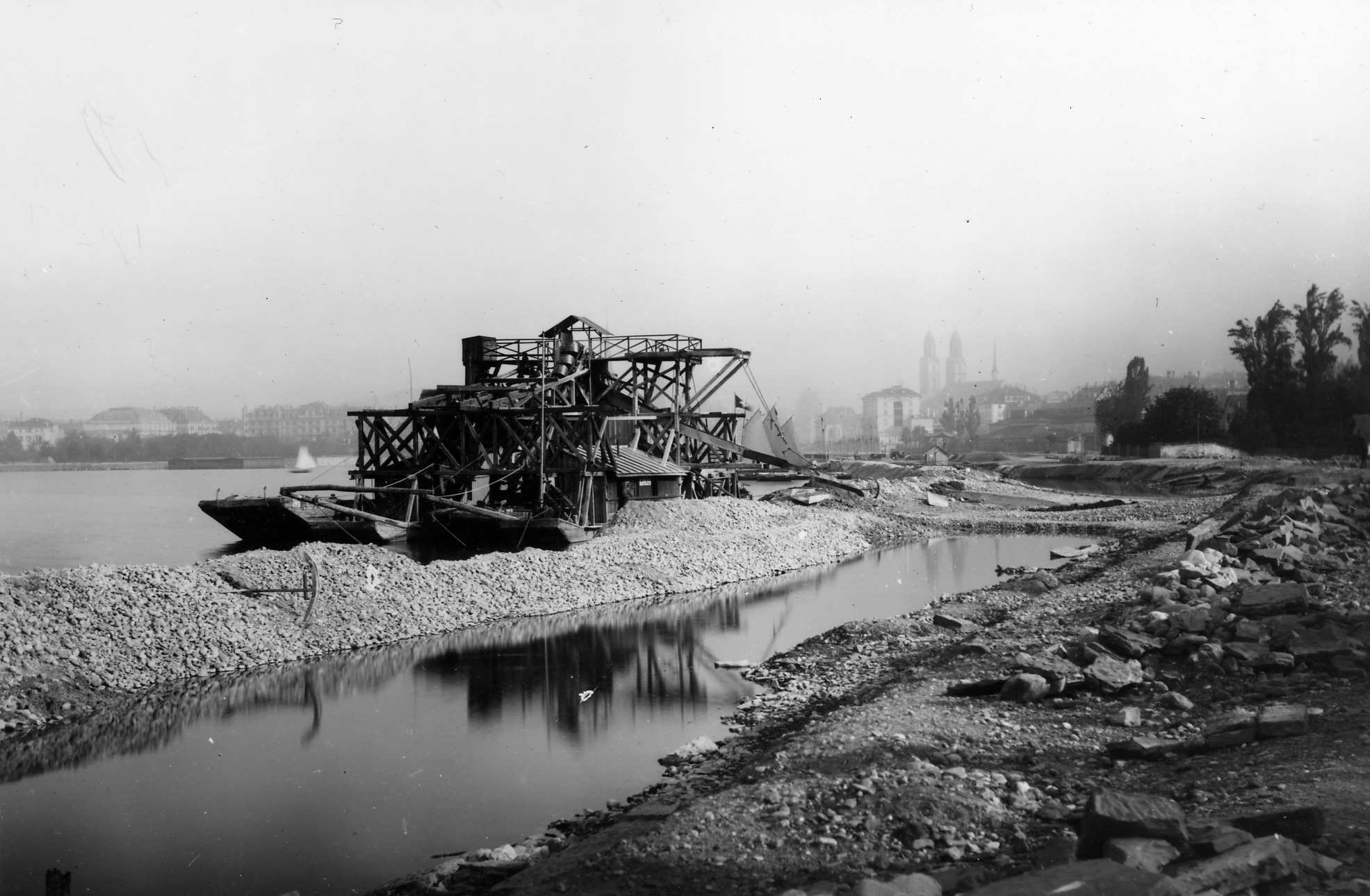
From 1833 onwards, several landfill works were completed. Next to the large Quaiprojekt, many smaller Terraforming events depicted above formed the landscape we know today. SAFFA Island was yet to be completed at this date.
Map, Stadtarchiv Zürich, around 1940.
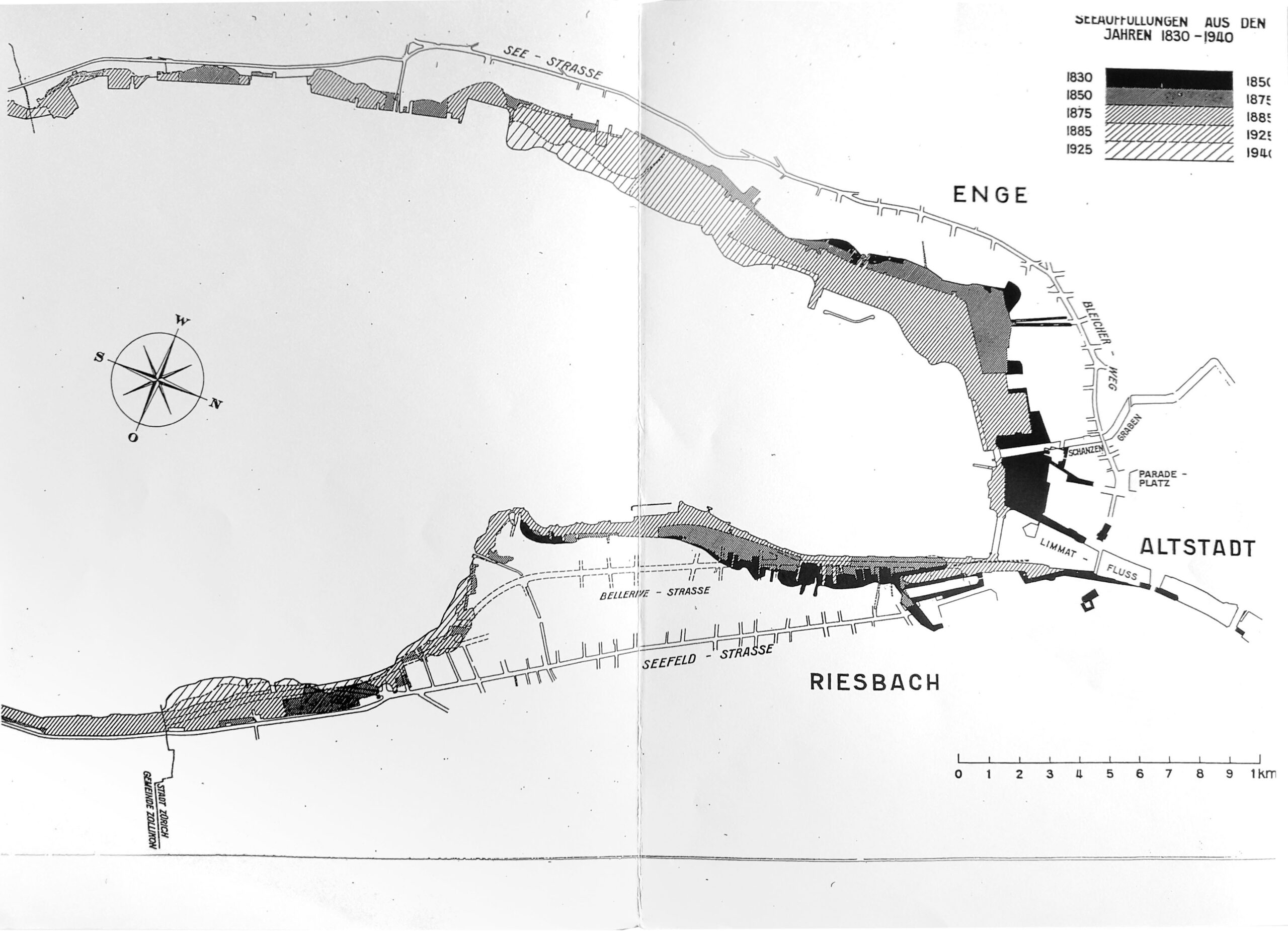
Property Situation of the land parcels at Enge after the Quaiprojekt. As the land next to the shore was extended, the parcels of the lakeside property holders became bigger or experienced beautification due to the newly designed parkscape. It was very common for these property holders to pay for this additional value. A large part of the Quaiprojekt was financed through these payments.
Plan, Stadtarchiv Zürich, 1881.
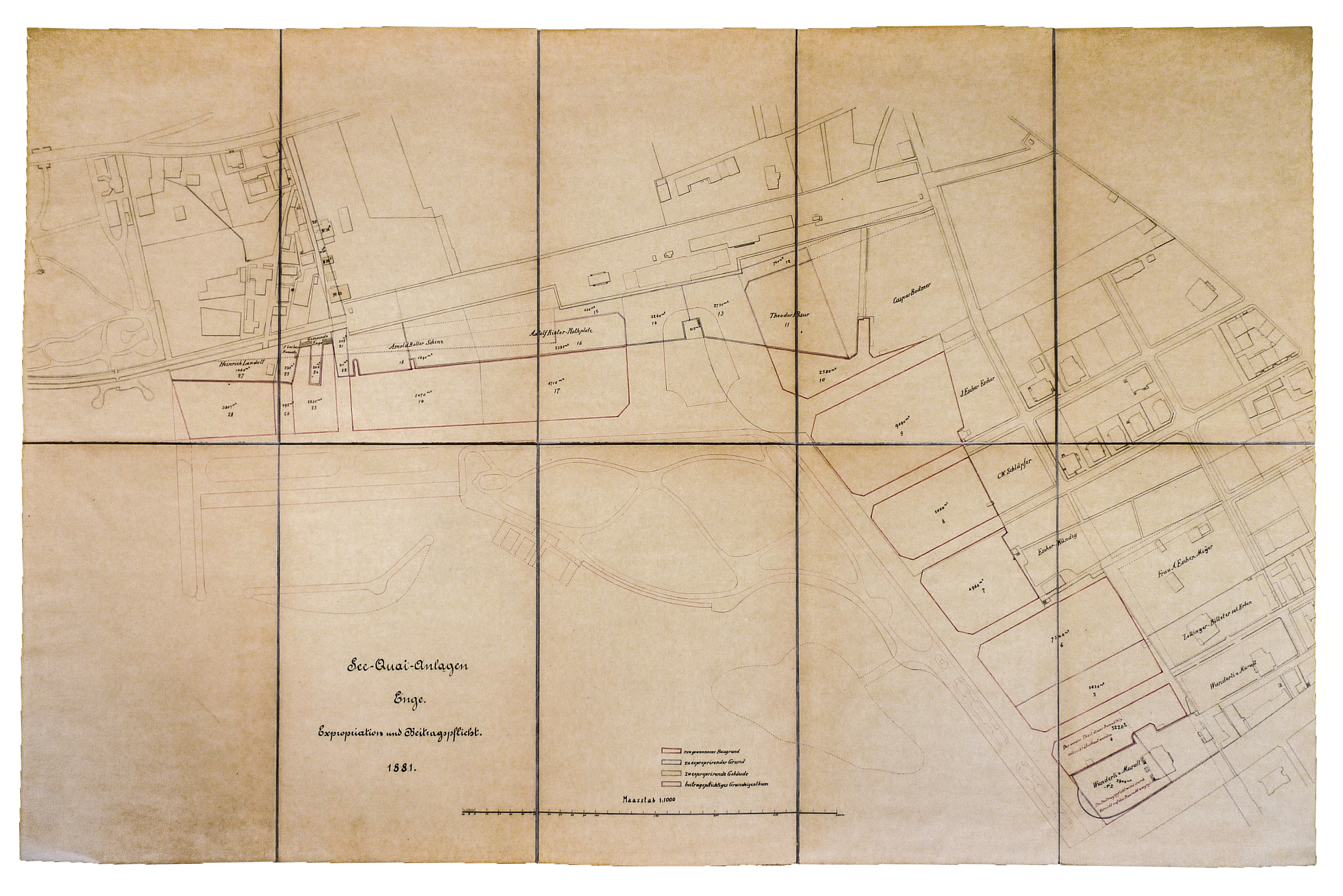
The ‘Seeüberquerung’. Every year a large number of people gather at the shores of Lake Zürich for a race across the lake.
Photograph by Christoph Ruckstuhl, Neue Zürcher Zeitung, 2019.
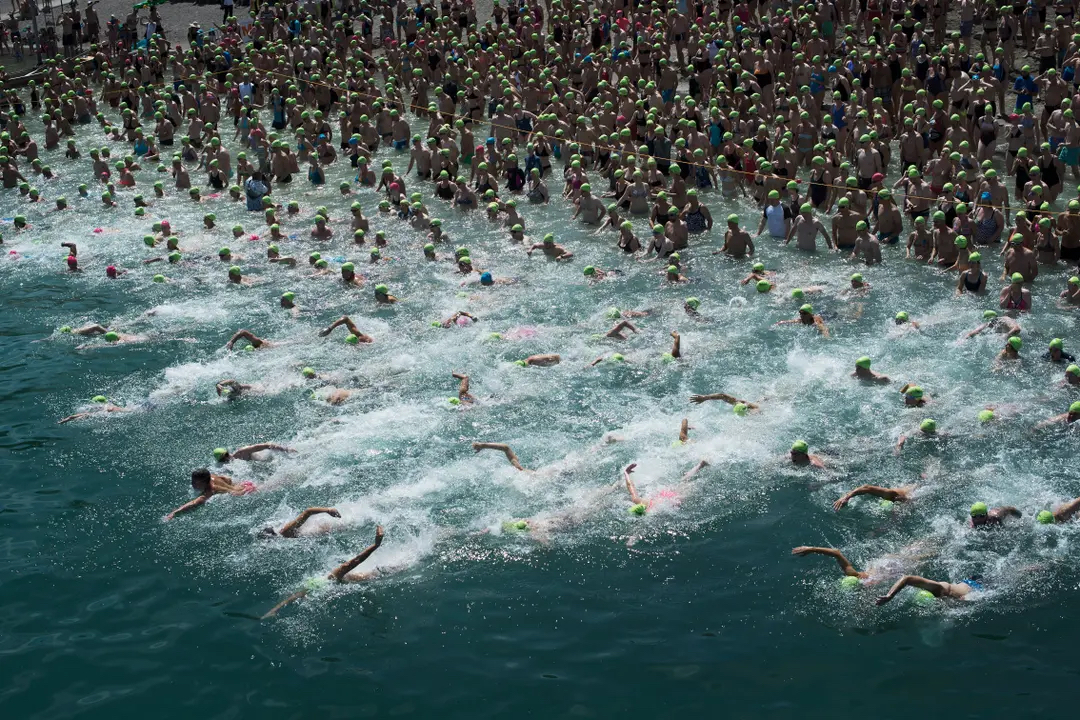
Temporality Diagram of different events and the amount of people around the lake shore of Zürich.
Own production.
